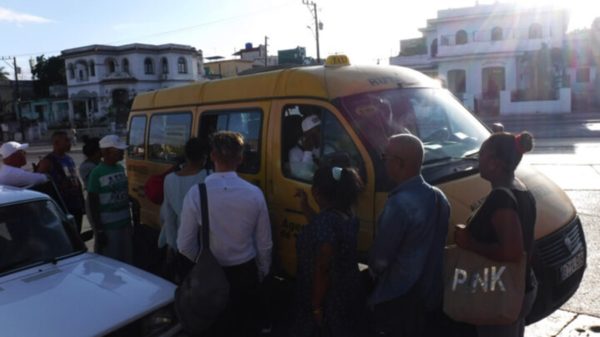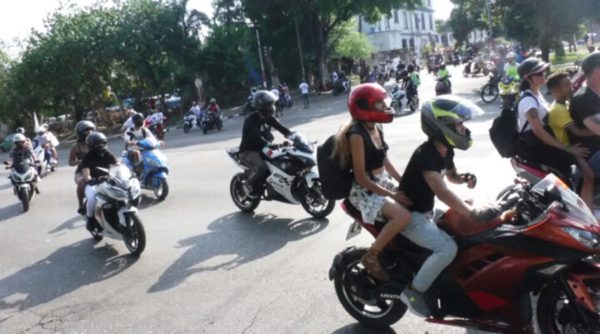Cuba’s Energy Crisis and the Need for New Strategies

HAVANA TIMES – Long lines of vehicles outside of gas stations reflect the acute shortage of diesel and gasoline in Cuba, which has had negative impacts on an economy that is highly dependent on fuel imports and has only a small proportion of renewable sources in its energy mix.
They don’t sell you enough fuel at the gas stations and the line barely creeps forward because there are also many irregularities and corruption. It’s exhausting, said engineer Rolando Estupiñon, who was driving an old Soviet Union-made Lada. When he spoke to IPS in Havana, he was still a long way from the pumps at the station and had given up hope of working that day.
Lisbet Brito, an accountant living in the Cuban capital, lamented in a conversation with IPS that the public buses take a long time. Private cars (that act as taxis) are making shorter trips and charging more. Nobody can afford this. It’s very difficult to get to work or school, or to a medical or any other kind of appointment.
Brito said another fear “is that food prices will rise further or supplies will decrease, if the shortage of oil makes it difficult to supply the markets.”
External and internal factors, including the fuel shortage, contribute to low levels of agricultural production, which is insufficient to meet the demand of the 11.1 million inhabitants of this Caribbean island nation.
The outlook is made even more complex by the macroeconomic imbalances, marked by partial dollarization, high inflation and depreciation of wages, salaries and pensions which have strangled household budgets.
Asiel Ramos, who uses his vehicle as a private taxi in this city of 2.2 million people, justified the increase in his rates “because the cost of a liter of diesel skyrocketed” on the illicit market, where it ranges from a little more than a dollar to three dollars, in sharp contrast to the average monthly salary of around 35 dollars.
I pay taxes and I have to keep the car running so my children and wife can eat. I can’t spend days stocking up on fuel, and when it’s over, go back again. If I buy on the left (a euphemism for buying on the black market) I have to raise my prices, Ramos told IPS.
To get around, most Cubans depend on the public transport system, based mainly on buses, which are less expensive than private taxis. But the chronic deficit of equipment, spare parts, lubricants and other inputs, added to the fuel shortage, means service is irregular, the most visible expression of which is the packed bus stops.

Measures
The fuel shortage drove the authorities to announce on the night of Apr. 25 the cancellation of the traditional parades for May 1, International Workers’ Day, and other activities such as political rallies or workplace, community or municipal events, as a rationing and austerity measure, and to declare that only essential transportation would be available.
In the capital, instead of the workers march through the Jose Marti Plaza of the Revolution, a rally was called for May 1 along the Havana Malecon or seaside boulevard, which expects some 120,000 people coming on foot from five of the 15 Havana municipalities.
On April 17, the Minister of Energy and Mines Vicente de la O Levy said on television that the fundamental cause of the shortage of diesel and gasoline is related to breaches of contracts by suppliers.
He said the U.S. embargo “makes it very difficult to obtain ships to transport the fuel, to seek financing and to meet the normal requirements of these contracts.”
In November, during President Miguel Diaz-Canel’s tour of Algeria, Russia, Turkey and China, agreements were signed with some of these countries for the stable supply of hydrocarbons, power generation and the modernization of thermoelectric plants.
Venezuela and Russia appear to be the country’s main energy suppliers.
On Apr. 23, the general director of the state company Union Cuba Petroleo (Cupet), Nestor Perez, told national media outlets that “one of the closest suppliers despite having innumerable production limitations… has guaranteed the supply of some products (refinable crude and derivatives) that somewhat alleviate the existing situation, but do not cover all the demands of the economy and the population.
Presumably Perez was referring to Venezuela, although he did not specifically say so, because that country has been the largest supplier of hydrocarbons this century, although due to its own internal crisis its exports to Cuba have clearly declined.
De la O Levy noted that, based on negotiations with international suppliers, an improvement is expected in May, although the availability of fuel will not reach the levels seen in 2017 or 2018, when the country was in a more favorable situation.
The priorities in the use of the reserves are the health and funeral services, public transportation and transport of merchandise, as well as the potato harvest, the official said.
The government of Havana, which as a province encompasses the 15 municipalities that make up the capital, limited the sale of diesel to 100 liters per vehicle and 40 liters of gasoline. In the remaining 14 provinces, rationing measures were also ordered.
Several universities postponed the entry of scholarship students until the first week of May, and announced online classes and consultations.
Sales of liquefied petroleum gas (LPG) are also affected, used by more than 1.7 million consumers, although the next arrival of a ship with the product should bring back stability to the service, according to officials.

Electricity generation deficit
This situation coincides with breaks and repairs in some of the 20 thermoelectric generation plants, which have operated for an average of more than 30 years.
These plants process, for the most part, heavy national crude oil, with a sulfur content between seven and 18 degrees API, which requires more frequent repair cycles that are sometimes postponed due to a lack of financing.
Around 95 percent of the electricity generated in Cuba comes from fossil sources.
This country consumes some 8.3 million tons of fuel per year, of which almost 40 percent is nationally produced.
President Diaz-Canel explained on Apr. 14 that due to the number of thermoelectric blocks under repair “we have had to depend more on distributed generation that basically consumes diesel” in the country’s 168 municipalities.
The generation deficits cause blackouts, although of a lesser magnitude than the 10 to 12-hour a day cuts that for a large part of 2022 affected different parts of the country and sparked demonstrations and pot-banging protests in poor neighborhoods of several municipalities.
The rest of the electricity generation comes from gas accompanying national oil, and floating units rented to Turkey, while renewable energy sources account for only five percent of the total.
The current energy situation is occurring as summer looms, when temperatures above 35 degrees Celsius increase the use of fans and air conditioners, while a majority of the 3.9 million homes in Cuba depend on electricity for cooking food.

Promoting renewable sources
We must further promote renewable sources and stimulate a change from fuel-guzzling, polluting vehicles that are more than half a century old to more modern and efficient ones, computer scientist Alexis Rodriguez told IPS from the eastern city of Holguin, where he lives.
The transformation of the national energy mix is considered by the government a matter of national security, and as part of its plans it aims for 37 percent of electricity to come from clean energy by 2030.
Since 2014, Cuba has had a policy for the prospective development of renewable energy sources and their efficient use, and in 2019 Decree Law 345 established regulations to increase the proportion of renewables in electricity generation and gradually decrease the share of fossil fuels.
Such a significant transformation will require investments of some six billion dollars, authorities in the sector estimate, which constitutes a challenge for a country whose main sources of revenue are dwindling, and which has pending a restart of interest payments on its debt to international creditors.
“It is also important to encourage the use of bicycles and electric vehicles, but they must be sold at reasonable prices, on credit as well, with guarantees of spare parts and the improvement of infrastructure,” Rodríguez added.
In addition to hybrid buses, a hundred light electric vehicles have been added to the capital’s public transport system that contribute to citizen micromobility and to reducing carbon emissions.
In recent years, the customs agency made provisions more flexible for citizens and companies to import solar panels. Although official data are not available, the measure has not had a significant influence.
Measures for the import and assembly on the island of bicycles, motorcycles and three and four-wheel electric vehicles more than half a million of which circulate in Cuba – also bolster the mobility of people and families.
However, the high prices and sales only in hard currencies curb the expansion and use of more environmentally-friendly vehicles. Another hurdle is the dependence on the national power grid to recharge the batteries and the absence of service stations for electric vehicles.





The only acceptable strategy is for the Communist Party to leave power. A real democracy is the only one action that will save the suffering people.
The only thing that awaits, is the recognition of a failed state. The Diaz-Canel begging bowl no longer suffices. Where are Russia and Venezuela, both supposedly staunch allies and both of which have almost unlimited oil supplies? With 2-3 power cuts per day, of unknown timing and duration, even charging up the battery powered scooters and bicycles is hazardous. Where do average Cubans get the money to pay what have become exhorbitant prices for basic food. Seasonal fruits are greeted with relief, as they bring with them some assurance of being able to eat.
After reading this article I can’t stop asking myself if, at first, after food and medicine shortages and now energy shortages don’t signal to the Castro dictatorship that what they are doing is not working, then obviously nothing will. The only thing left to wonder is how long does it take for a country to simply die? I no longer believe that Cubans will rise up. At this point change will only come when people simply stop going to work. When buses stop running. When civilized life as we know it ceases.